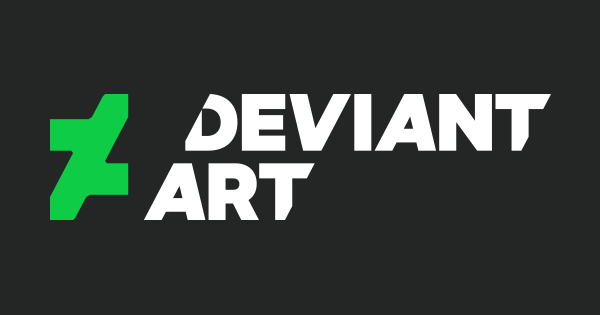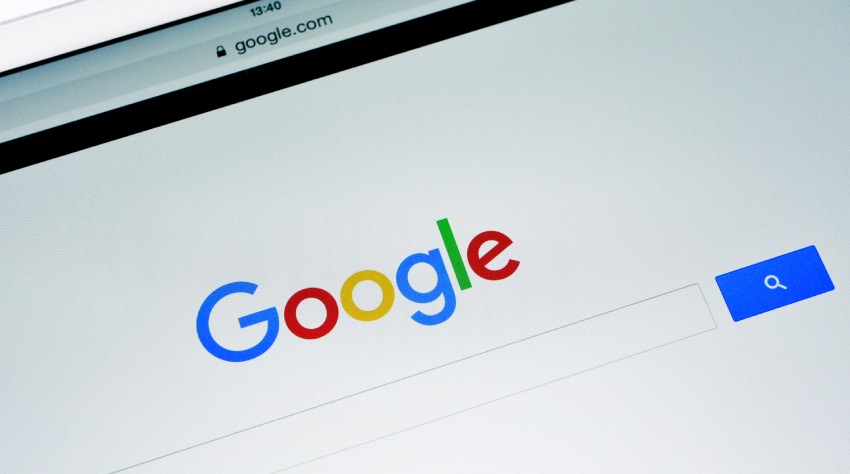
It used to be that artists had all the fun! They’re always toying with new mediums and styles, seeing what works and tossing out what doesn’t. Throughout history, creative people have been great risk-takers. Now, artificial intelligence is starting to take over this creative role and, with the help of algorithmic innovation, threatens the artist’s very existence.
How is AI doing it exactly?
The first step in AI art generation is to scrape the internet for images and artists’ names. The developers use web crawlers to crawl millions of websites, scraping digital art and photos alongside their descriptions, tags, and artists’ names.
This data is fed into a huge dataset, which the AI tool employs to learn artistic styles associated with particular descriptions and artists. Then, when a user wants an image similar to that of an artist whose art was included in the dataset, the user instructs AI to generate images in (Artist’s Name) style.
For the average non-artist who seeks breathtaking images at a fraction of the cost, AI-generated art is a lifesaver. On the other end of the spectrum, however, lies an artist whose work was used to train an AI tool but received no compensation. So, while sponsors, investors and developers earn millions of dollars from user subscriptions, the artist loses clients and their source of income.
Artists have always struggled to protect their creative works from being copied by other artists or technology. But now that AI has begun infiltrating the art world, artists struggle even more. The question of whether or not AI can create art is still up for debate, but we do know that it can copy art pretty well.
How can you protect your artwork from being replicated by AI? We’ll show you how in this article.
Let’s dig in!
Ways Artists Can Protect Their Artwork from AI
Opt out of AI Training

To understand why and how you should opt-out your art pieces from AI training, let’s take a quick look at what led to AI training.
Stability AI Ltd paid Large-Scale Artificial Intelligence Open Network (LAION) to build LAION-5B, the biggest digital image dataset. LAION-5B contains over 5.85 billion images with text descriptions collated from different websites, including Google, Pinterest, and other platforms where artists post their works online.
Afterward, Stability AI developed Stable Diffusion, an open-source AI software for generating images from text, and trained it using images in LAION-5B. For example, to learn how to generate an image of a bicycle, Stable Diffusion scans millions of pictures of bicycles in LAION-5B.
When a user types “bicycle” in the text box, Stable Diffusion picks up on that word and reproduces something similar to the many images of bicycles, it’s learned.
Leading AI image applications, including Midjourney and DreamUp, now rely on Stable Diffusion for image generation.
LAION claims that the images in LAION-5B should be used for research purposes. However, this is just a way of exempting itself from copyright infringement issues because all images in LAION-5B are copyrighted by existence. And using copyrighted works for research constitutes fair use. Unfortunately, AI text-to-image generators, like Stable Diffusion, are using LAION-5B for profitable business.
Luckily, some artists teamed up to establish Spawning Inc, to prevent using artwork and corresponding digital identifiers without consent.
Among Spawning’s innovations is “Have I Been Trained?” This website is free to use and helps you discover if your digital artwork or photography has been lumped in an AI image dataset, like LAION-5B.
If you find that any of your artworks have been included in those datasets, you can “opt out” the image from being used to train AI models. This action makes LAION-5B delete your artwork from its database, preventing AI tools from accessing it in future training sessions, thus preserving its uniqueness.
Publish your Art on a Platform that Offers Protection Against AI

When you create an account on DeviantArt and navigate to Profile > Settings > General, you’ll find a section titled “Tell AI Datasets They Can’t Use Your Content.” By default, the box in this section is checked. This means that DeviantArt automatically opts out all Deviations (artworks) published on its platform from being scrapped into image datasets, where AI tools can access them and use them for training.
Unless a Deviant (the DeviantArt user) unchecks that box, DeviantArt places a “noai” meta tag in the head section of the URL of the web page displaying the Deviant’s Deviation. When crawlers find the “noai” tag in a web page’s URL, they know to exclude that Deviation from image datasets used for AI image generation.
Besides the meta tag, DeviantArt includes a “noai” directive in its X-Robots-Tag. This tells crawlers that content published on DeviantArt isn’t meant to be used to train AI image software.
Despite DeviantArt’s efforts to curb the use of its users’ works by AI without their permission, the website does not actively prosecute violators. In fact, the company acknowledges that third parties, including AI image generators and owners of image datasets, can still ignore “noai” directives.
So, honestly, DeviantArt’s TOS may provide concrete grounds for legal action against AI websites using human artwork, but it doesn’t do much beyond that.
Block Bots from Crawling Pages on your Site

This method is only applicable if you own the site that hosts your artwork. To prevent image databases from scraping images from your site in the first place, include a robots.txt file in the root of your website domain.
A robots.txt file is a text file that website owners can use to control which pages can be crawled by search engines and web crawlers.
Before creating a robots.txt file, you need to know which pages on your website contain images you created but don’t want AI image generators to access.
You can create a robots.txt file using a plain text editor like Notepad or TextEdit. The file should be named “robots.txt” and placed in the root directory of your website.
In the robots.txt file, you use the “Disallow” directive to specify the pages you want to prevent web crawlers from crawling. For example, if you want to prevent web crawlers from crawling a page called “art-page.html”, you’ll add the following line to your robots.txt file: Disallow: /art-page.html.
Once you have created your robots.txt file, you should test it to ensure it works as expected. You can do this using the Google Search Console or other web admin tools.
The downside of preventing pages on your site from being crawled is that it can hurt your site’s search engine ranking. This means you get less exposure. Also, if you plan to monetize your art online, this option may not do you justice.
Mis-tag your Art
AI image-generating software usually requires users to input some text describing the kind of image they want. This is because these AI tools are trained with existing image-text pairs.
Most artists tag works with words accurately describing them, making it easier for AI to copy those works. So what if you label your artwork with misleading tags?
For instance, while posting an illustration of a singing cat on Unsplash or Behance, tag it with phrases like “dog” or “mirror” instead of “cat” or “singing.” If your artwork is scraped into a dataset and an AI software stumbles on it, these misleading tags confuse the AI tool and may prevent it from learning anything from your artwork.
Copyright Registration
All creative works are copyrighted as soon as they exist. International copyright laws, such as the Berne Convention for the Protection of Literary and Artistic Works and the Buenos Aires Convention, protect even an unfinished work of art.
As long as your country is a party to these conventions, their copyright protection provisions extend to your artwork. If you wish to take further measures to protect your artwork from AI, you can register it with the copyright registration office in your country at a price.
Copyright registration doesn’t prevent potential infringers from using your artwork without your permission. However, giving notice of copyright ownership when digitally publishing your art can strengthen your copyright infringement claim.
If registration isn’t within your budget, you can mail a copy of your artwork to yourself. While this doesn’t hold as much weight as registration, it can serve as evidence of ownership of your work.
“Glaze” Your Artwork
Developed by professors and PhD students of Computer Science at the University of Chicago and professional artists, Glaze combats AI mimicry by cloaking artworks. Cloaking is the process of changing stylistic elements of artists’ creations. These changes are subtle and barely affect the artwork.
The idea behind Glaze is to make images unlearnable to AI tools, like Stable Diffusion and Midjourney. These tools scan images in artists’ digital portfolios, identify styles unique to those artists, and copy those styles when prompted.
For example, take it that Stable Diffusion has seen a couple of paintings made by an artist named Maria. If instructed to generate an image of “a landscape in Maria’s style,” the software uses what it’s learned from everything it’s seen in Maria’s portfolio to create the image.
But if Maria runs her artworks through Glaze before posting them online, Stable Diffusion won’t identify a style unique to them. Therefore, when asked to generate a landscape image in Maria’s style, it produces something else entirely.
While cloaking makes it difficult for AI to copy artists’ styles, the technique may not work against queries that don’t require AI to create images in any artist’s style. For the example above, if Stable Diffusion is asked just to generate a landscape image, it copies what it’s learned from images of landscapes on the web and produces desired results.
Please remember that Glazing your work isn’t a final solution to AI mimicry. It’s just to protect your work in the meantime. The beta version of Glaze is now available for download on Windows 10 and 11 and MacOS M1 M2, and Intel.
Artists Sue AI Image Tools for Copyright Infringement and Unfair Use

After developing Stable Diffusion, Stability AI gave Midjourney the license to use the software for commercial text-to-image generation. Stability AI also built DreamStudio, a paid web-based text-to-image generator powered by Stable Diffusion.
Meanwhile, DeviantArt Inc. is the parent company of DeviantArt, a digital community that allows users to generate images with DreamUp, a software powered by Stable Diffusion.
Three artists brought a class action against these three companies for allegedly vicariously and directly infringing their copyrights and violating the DMCA, the Unfair Competition law, and their rights to publicize their works. The artists are Sarah Andersen, Kelly McKernan, and Karla Ortiz.
Some of the artworks scraped by LAION-5B and used to train Stable Diffusion with the US Copyright Office had been registered by the plaintiffs before they took legal action.
The most notable issue raised in the lawsuit is whether the court should prevent the defendants from using images in LAION-5B without obtaining permission from their creators and compensating them. This point has merit because the defendants are profiting from the artists’ works at the artists’ expense.
As for the suit, it was filed on January 13, 2023, in the San Francisco jurisdiction, by the Joseph Saveri Law Firm, for the plaintiffs. While the case hasn’t been heard yet, some legal experts have had some things to say in favor of AI text-to-image tools.
One of them is Professor Jean Fromer, who teaches intellectual property law at NYU. She noted that AI creates art similarly to how people create art: by being inspired by existing artwork, digital creations, objects and photos. Creativity doesn’t exist in a vacuum, does it?
While AI-spun and manmade art continue to coexist, it’s important to remember that the market for artwork whose value is purely intrinsic will continue to grow. Protecting your IP from being imitated by AI is just the beginning. Imagination, creativity, and solving problems are all inherent in the human creative process and are tasks that, at present, only humans can perform.

